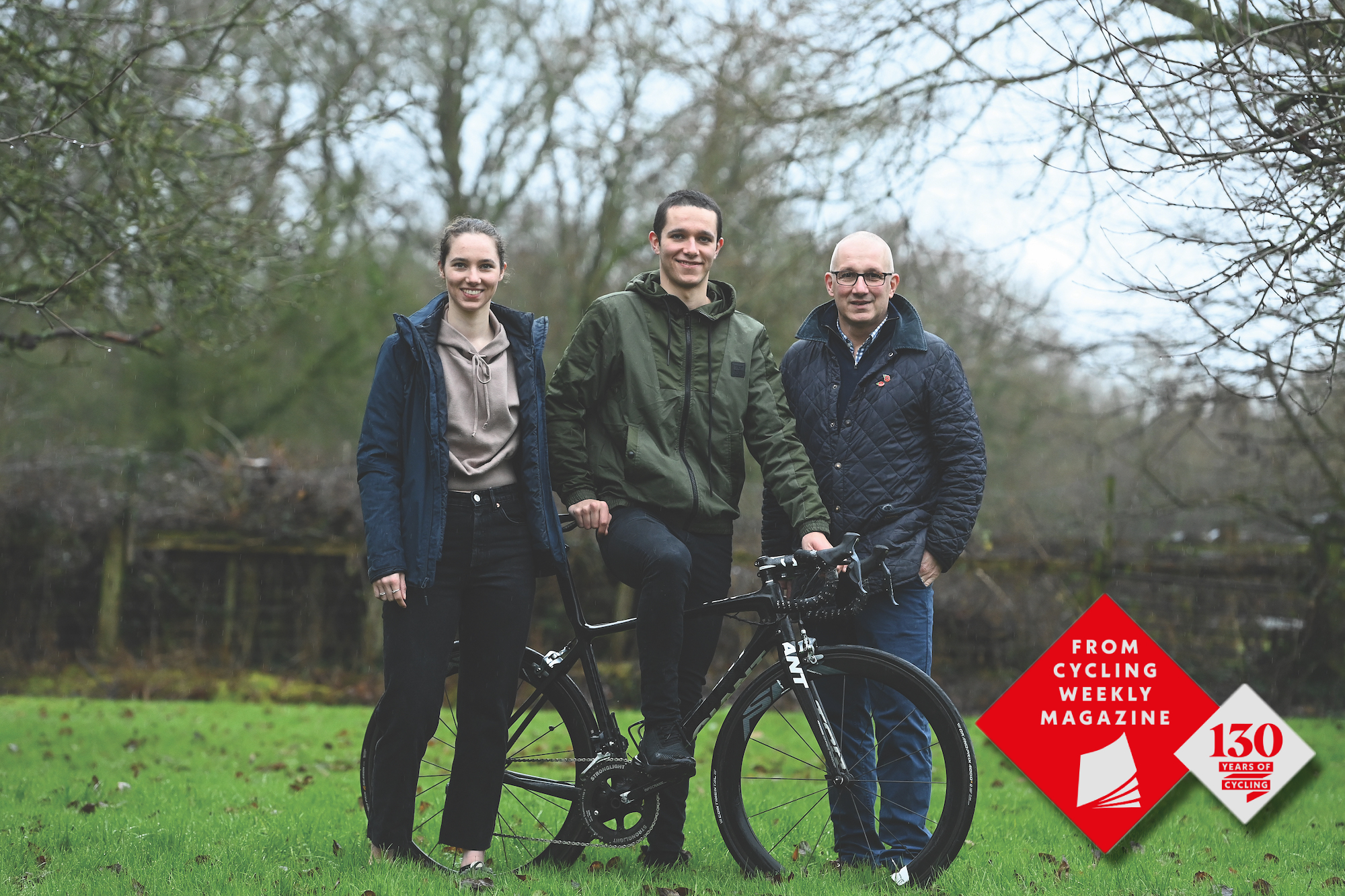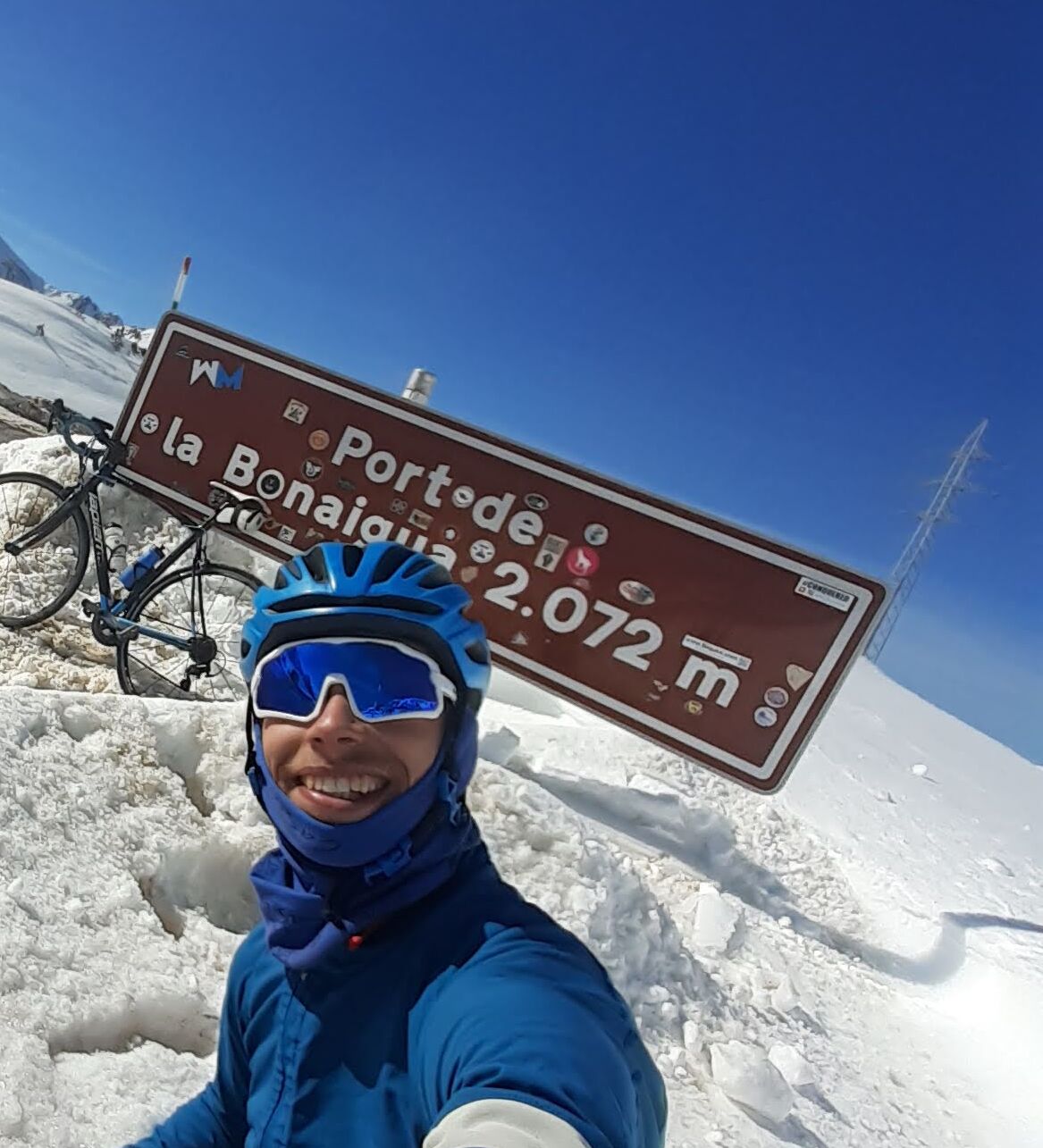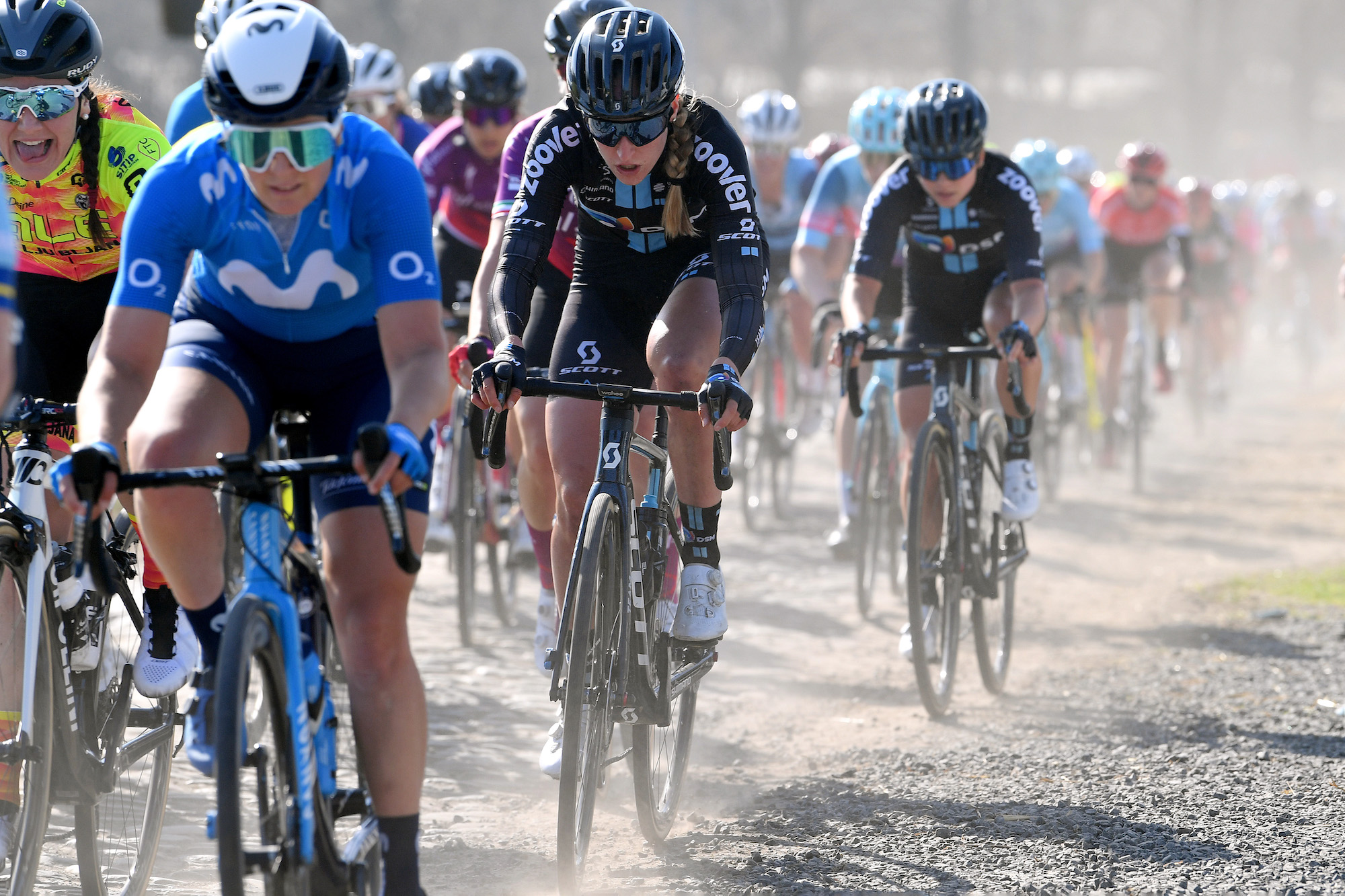In the genes: Meet the Georgi-ian dynasty
With more national titles between them than most of us have hand-me-down jerseys, the Georgis are one of Britain’s most decorated cycling families. But how much of their cycling excellence is genetic

The Georgi family (Andy Jones)

Do you ever look at your parents and wonder how their genetics have influenced your ability as a cyclist? Perhaps you go well on big mileage, or fall apart in hot conditions, or favour long efforts over sprints – just like your sporting parent or sibling.
The study of genetics in sport is a poorly funded area of science, despite the interest, with a paucity of good-quality studies tracing the links between genes and performance characteristics. Though we can’t be specific, we know there is a significant genetic influence on how people perform in a sporting setting – and, from simple observation, that sporting success often runs in families.
Speaking from the family home in Dursley, Gloucestershire, the Georgis sat down with me (virtually) for the second instalment of our ‘In The Genes?’ series. I wanted to ask them, as one of the most prominent families on the grassroots cycling circuit since the 2010s, how much of their success has been thanks to their genetics?
Their love for the sport, coupled with their determination – a trait that dad Peter is convinced came down the paternal line from his Greek-Cypriot father – was evident during our chat as we discussed their numerous achievements.
>>> Subscriptions deals for Cycling Weekly magazine
Peter, 55, is a former European masters scratch champion and still races today – he is the winner of seven national masters titles. Peter’s wife Louise is an amateur rider who regularly competes in TTs, and the couple’s two children have both racked up prestigious cycling triumphs.
As a teenager, son Etienne won a stage of the Junior Tour of Wales and Tour of Mendips en route to winning the National Series. He raced with Team Wiggins for two seasons, before hanging up his racing wheels aged 20, in March 2019, to take up a position in the army reserves in the Royal Engineer Corps.
Get The Leadout Newsletter
The latest race content, interviews, features, reviews and expert buying guides, direct to your inbox!
Etienne’s younger sister Pfeiffer, meanwhile, had a dominant youth and junior career – including winning the junior Ghent-Wevelgem – and started riding for Team Sunweb (now Team DSM) in 2019 aged just 18. Now 20, Pfeiffer is a very highly-rated road racer, and has already established herself as a key member of Lorena Wiebes’ lead-out team. Let’s meet them...
Cycling Weekly: How big a role did cycling play in your childhoods?
Peter: I rode the Eastway circuit in London as a youngster and won a lot. I would say that cycling has always been part of the kids’ lives.
Pfeiffer: I remember racing aged four at Herne Hill Velodrome, and you couldn’t get me away from it.
Peter: You had a few close calls early on.
Pfeiffer: I recall my first-ever time on a track bike, and I got tired so I stopped pedalling. I got flicked over the front of the handlebars on the home straight and cut myself badly. I carried on, though, because I loved it.
Peter: And you decked it riding around Castle Combe, but just about managed to rescue yourself.
Pfeiffer: I wasn’t even four, was riding with stabilisers and lost it completely. I flew down this hill all on my own.
Etienne: I did a lot of sports, but cycling was always the main one. At school we were known as the cyclists. There were 2,000 people in our secondary school, and no one cycled to school or on the weekend except me and Pfeiffer.
Pfeiffer: I don’t think people understood what we did, really. We were just the cyclists, that was it.
CW: Do you think your genes have helped you?

Pfeiffer: I think your genes affect everything and in different ways, but
I don’t think they are the main reason we have got to the levels we have in cycling.
Peter: I think there’s something genetic in it.
Pfeiffer: Yeah, I agree, but being in a cycling family, knowing the sport from a young age, the support, and seeing my dad race, being around it all of the time is more important than any biological advantage that we got from our genes. That is my opinion.
Peter: When I started, loads of people said I got good quickly. Colin Lewis [former pro and Peter’s mentor] said to me, “You could train like a donkey, but if there isn’t a spark there, a biological advantage, it won’t work”. And I know that I was better than other people doing the same stuff that I did. Watching the kids, I realised they were above most of their peers, so I think there’s something genetic.
Etienne: It’s hard to say. If Dad didn’t race, I’m certain we wouldn’t have either. Comparing myself and my sister, she is just generally better than me. I had every opportunity, the equipment, the races, so if I was naturally good enough, I would have made it. I committed 100 per cent, but in the end it wasn’t good enough. My sister has done the same and has made it to the top level – and for me that shows a natural advantage because if we have the same genes…
Peter: It’s also luck and timing.
Pfeiffer: What you’re saying, Etienne, is that it is biological, but not in a good way!
Etienne: We’ve had the same nurture, but the results are different, so it means it must be due to nature.
CW: Do you think you have untypical proportions of fast- or small-twitch fibres?
Etienne: On the spectrum of long-distance athletes to sprinters, I think we’re in the middle. We are quite good at climbing, can sprint if needed and can do shorter time trials and full-power efforts.
Pfeiffer: I think I have developed more fast-twitch since moving from junior into the elites. Maybe that was always in me, but now that I do more gym work, my peak power has got so much higher. That is why I am now towards the end of the lead-out.
Peter: I wouldn’t say that’s so new. You won countless national track titles.
Pfeiffer: And I put you away in a sprint now!
Etienne: I think I have changed to have more fast-twitch fibres recently. Now I’ve stopped cycling and do other exercises in the army, my peak power is higher and my sprinting is better. I am heavier, but more powerful and more punchy than what I was. I’m stronger.
Pfeiffer: Maybe we always had that potential, but the training has revealed it. The training and the races brought it out. You can’t just do one gym session and then suddenly be the best sprinter in the world – it doesn’t work like that.
Etienne: I do think we are in the middle ground [of fast- vs slow-twitch], but my sister and I have changed due to the training and racing we have done, and we have had to get better at high-end efforts.
CW: So are you quick adapters to training?
Etienne: I take a long time to adapt – a few people have told me that. It took me over a year to get used to senior races, whereas some people do a few and then they are fine. To get better took a lot of incremental steps.
Pfeiffer: I’m the opposite, I think. During the first lockdown, I did a lot of base miles, but I was missing the explosivity. After just a week of training my explosiveness, I felt powerful again. My adaptations come quickly, I feel.
Peter: Even as a Master now, I can feel my form coming week on week. After just a few weeks, I feel a whole lot faster and can feel my body adapting.
CW: Do you prefer riding in hot or cold weather?
Etienne: Cold.
Pfeiffer: One hundred per cent cold.
Peter: Yeah, cold.
Etienne: I can’t ride in the heat.
Pfeiffer: Me neither. My muscles just don’t work when it’s hot.
Etienne: For the first few days in the heat, I feel like a totally different person. In the cold, once I warm up, I feel really fresh and good, whereas in the heat there’s no way I can cool down to lower my heat rate, and my legs are like jelly.
Pfeiffer: I even prefer riding in the cold and training in the winter than I do in the summer. Any day.
Peter: The first hot day is hard, but you can get used to it. But I’m the same, definitely prefer the cold.
CW: How do you cope at altitude?
Peter: I react well to it. I have been climbing in mountains way higher than cycling climbs and have been fine.
Pfeiffer: I did an altitude camp in Austria over 2,000m last summer. I had to take oxygen saturation and iron tablets and after two days I was back to normal.
Etienne: I’ve not raced or trained much above 2,000m, but haven’t had any issues when I have.
Peter: If you have a big engine, I think you have the ability to cope at altitude.
CW: How would you rate your reaction time?
Etienne: Mine is slower than Pfeiffer’s. When we sprint, I would always have a cheat start, a little bit ahead, but still come second.
Pfeiffer: [laughs] True.
Etienne: That’s your speed also, but I remember when I was riding the team pursuit with British Cycling and I would always be the slowest off the line. That could be power, but I think it was poor reaction time.
Peter: Mine is slower than Pfeiffer’s, too. I can come off a wheel and keep going in a long sprint, but a real sprinter who took the pace right down to the finish would always beat me because they’d have the jump on me.
CW: How good is your hand-eye coordination?
Pfeiffer: For football and stuff? I am so bad. I can’t do anything like that, juggling, catching, kicking.
Etienne: I am better because I do more stuff than cycling. I think generally the better the cyclist, the worse the hand-eye coordination.
Peter: I was always quite good at school at rounders, those things. I could throw and catch. My hand-eye’s quite good, I think.
CW: Were your power numbers always impressive, from the beginning?
Etienne: Above average, I’d say, but not exceptional.

Pfeiffer: They weren’t that impressive.
Etienne: I know mine were fairly good. But they weren’t ever the best compared to others – they were good, just good.
Pfeiffer: I always thought as juniors we did well and I could see we raced tactically better, but we didn’t have the best power output.
Etienne: We weren’t like the biggest riders who could punch the win and do what they wanted.
Peter: As a Master rider, I got up to an FTP of 335 and that’s more than most, but I won’t get back there now.
How the Georgis train - 'We were always encouraged to mix it up'
To many cycling-mad families, the Georgis’ weekly schedule will appear very similar to their own. A weekend dominated by longer rides and club runs, plus a midweek time trial and track sessions. No matter the week, cycling was at the forefront of their lives, Peter racing in the masters leagues and Etienne and Pfeiffer as juniors.
“The idea of training and progression was with them from a young age,” Peter says. “On our Saturday club run with Giant CC, we had a few ex-pros who had ridden in Italy and France, and that one connection with the group ride encouraged them to get out, and showed there was a linkage to the top. Having that one club run a week really helped, as did racing, local time trials from the age of 12 and riding to and from school.”
“There was always track league, too,” Etienne says, “usually twice a week. There was always something to do during the week that we could use as training. We needed that because otherwise it’s the same thing over and over again, whereas the track is different, the time trial bike is different to training on the road bike. We always had a mixture.”
>>> Cycling Weekly is available on your Smart phone, tablet and desktop
And it appears their upbringing influenced their training preferences. Etienne adds: “Pfeiffer and I are similar in that we prefer longer, hillier rides as opposed to shorter, flatter rides because that’s what we’ve done all of our lives.”
“And we both hate training inside!” Pfeffier adds. “I hate the turbo and rollers and I know Etienne does too. We’ve always found it mentally easier to train outside.”
Geneticist’s view - ‘The genetic component is 30-80 per cent’
You only need to look at any video of a pro cyclist attempting to play football to confirm that endurance athletes are generally pretty useless at ball sports. But to what extent are raw skills and abilities such as hand-eye coordination genetic? We asked Alun Williams, director of the Sports Genomics Lab at the Manchester Metropolitan University.
“Every time the genetic component of a characteristic is looked at, the range has always been between 30 and 80 per cent,” said Williams. “Eighty per cent is the figure for body height, that’s very heavily genetic, and things like muscle fibre types, VO2 max, the ability to learn new skills, and hand-eye coordination typically come in above the 50 per cent mark. Injuries, specifically tendon injuries or weak bones, come in around 30 to 40 per cent. Everything that has been looked at always comes in with a reasonably sized genetic component of at least 30 per cent.”
Is it credible, then, that Pfeiffer claims she lacks the basic skills in multi-skill sports? “It’s reasonable her endurance traits go against her in different sports,” Williams said. “It would appear that she has a good deal of endurance genes, which give her high haematological levels in the blood and slow-twitch muscle fibres, among other things. There are very, very long odds that she would also have very good hand-eye coordination because it’s a different set of genes. A small minority will be lucky and have both sets, but it’s pretty slim.”
And is the family’s apparent ability to greatly develop their sprinting power proof that their fast-twitch fibres had been present, but effectively dormant?
“The genetic contribution to the type of muscle fibres is roughly 50 per cent, with the other half being down to everything else from the moment of conception and the environment exposed to in the womb. It’s probable the family have developed high maximal outputs as they did have that function there, and by changing their training and building on the genetics they had, they were able to see the change. It’s very difficult for someone starting out with average physiology to increase their percentage and proportion of fast-twitch fibres to elite level.”
This feature originally appeared in the print edition of Cycling Weekly, on sale in newsagents and supermarkets, priced £3.25.
You can subscribe through this link here.
That way you’ll never miss an issue.

Thank you for reading 20 articles this month* Join now for unlimited access
Enjoy your first month for just £1 / $1 / €1
*Read 5 free articles per month without a subscription

Join now for unlimited access
Try first month for just £1 / $1 / €1
A freelance sports journalist and podcaster, you'll mostly find Chris's byline attached to news scoops, profile interviews and long reads across a variety of different publications. He has been writing regularly for Cycling Weekly since 2013. In 2024 he released a seven-part podcast documentary, Ghost in the Machine, about motor doping in cycling.
Previously a ski, hiking and cycling guide in the Canadian Rockies and Spanish Pyrenees, he almost certainly holds the record for the most number of interviews conducted from snowy mountains. He lives in Valencia, Spain.
-
 Full Tour of Britain Women route announced, taking place from North Yorkshire to Glasgow
Full Tour of Britain Women route announced, taking place from North Yorkshire to GlasgowBritish Cycling's Women's WorldTour four-stage race will take place in northern England and Scotland
By Tom Thewlis
-
 Positive signs for UK bike industry as Halfords cycling sales grow
Positive signs for UK bike industry as Halfords cycling sales growRetailer admits that the impact of Donald Trump's tariffs remains to be seen
By Tom Thewlis